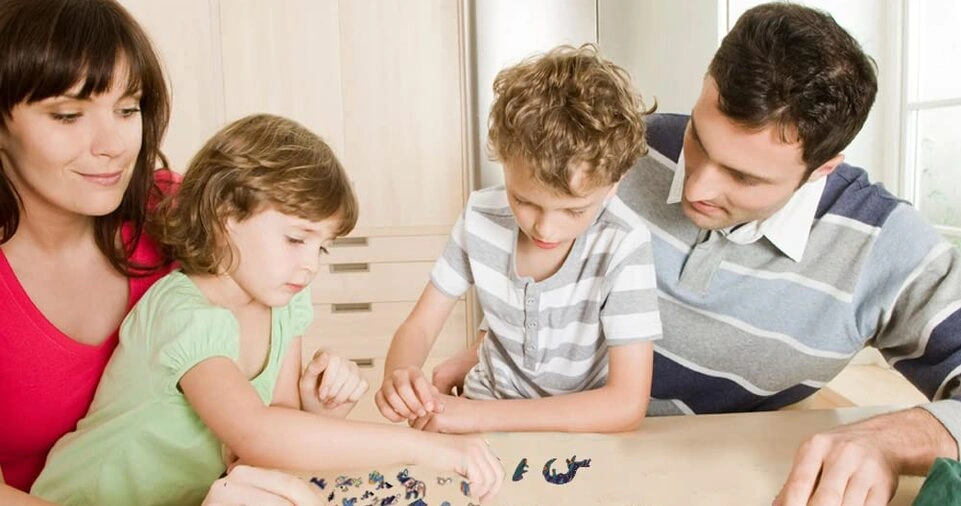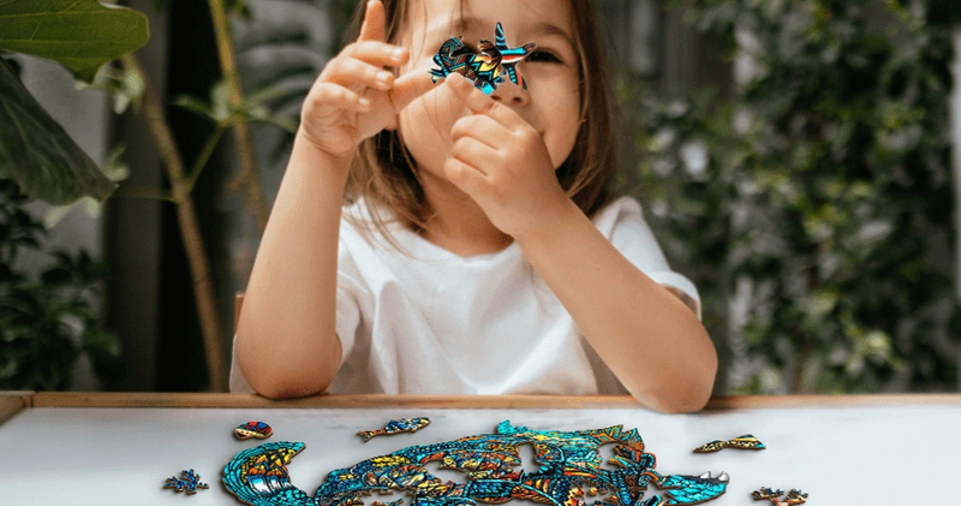Jigsaw puzzles are a delightful way to unwind, exercise your brain, and even bond with others.
Whether you’re new to puzzles or an experienced enthusiast, selecting the right puzzle for your skill level is crucial to ensuring an enjoyable experience.
A puzzle that’s too easy may leave you feeling underwhelmed, while one that’s overly challenging can lead to frustration.
This guide will walk you through how to pick the perfect puzzle that matches your abilities and preferences.
We’ll explore various aspects, such as piece count, design complexity, material quality, and even themes, so you can confidently make your choice and dive into this rewarding hobby.
By understanding the key factors involved in selecting a puzzle, you can enhance your puzzling journey and turn it into a fulfilling pastime that sharpens your mind, promotes relaxation, and delivers a sense of accomplishment.
Whether you’re buying a puzzle for yourself or as a gift, these tips will help you find the ideal fit. So, let’s get started on the path to finding your next great puzzling adventure!
Choose the Perfect Jigsaw Puzzle for Your Skill Level

Beginner Level: Keep It Simple
If you’re just starting out with jigsaw puzzles, it’s best to begin with simpler designs and fewer pieces.
Choosing the right puzzle at this stage is essential to avoid feeling overwhelmed or giving up altogether.
Here are some tips for beginners:
Piece Count for Beginners
Starting small is key. A puzzle with 100 to 300 pieces is ideal for beginners, as it provides a manageable challenge.
These smaller puzzles can usually be completed in one sitting, giving you a quick sense of accomplishment.
Design Choices
Look for puzzles with clear and distinct sections.
For instance, puzzles featuring animals, landscapes, or cartoon characters often have defined color zones, making it easier to sort and assemble pieces.
Bold and vibrant images with minimal complexity work well for novices.
Piece Size
Larger pieces are easier to handle and assemble, making them perfect for beginners.
Many beginner puzzles are designed with oversized pieces that are not only easy to grip but also reduce the challenge of figuring out where they fit.
Benefits of Beginner Puzzles
Starting with a beginner-friendly puzzle helps build confidence and allows you to develop problem-solving strategies. It also introduces you to the joy of puzzling without overwhelming you.
Intermediate Level: Add Some Challenge
Once you’ve gained confidence and experience with beginner puzzles, you can move on to intermediate-level puzzles. These provide a moderate challenge while still being achievable for most puzzlers.
Piece Count for Intermediate Puzzles
Intermediate puzzles typically range from 500 to 1000 pieces. These puzzles take more time and effort than beginner ones but are still manageable for those with some experience.
Design Complexity
Intermediate puzzles often feature more intricate designs, such as cityscapes, abstract patterns, or nature scenes with a variety of elements. Look for images that are detailed but still offer identifiable sections to work on.
Unique Features
At this level, you might encounter puzzles with irregularly shaped pieces or those that include hidden elements within the design. These features add an extra layer of challenge and excitement.
Tips for Success
- Sort pieces by edge, color, or pattern before starting.
- Work on one section at a time to avoid feeling overwhelmed.
- Take breaks to keep your mind fresh and focused.
Benefits of Intermediate Puzzles
Intermediate puzzles allow you to sharpen your skills and improve your patience and problem-solving abilities. They’re a great way to transition from casual puzzling to more serious challenges.
Advanced Level: Push Your Limits
For experienced puzzlers, advanced-level puzzles offer the ultimate challenge. These puzzles test your patience, attention to detail, and problem-solving skills like never before.
Piece Count for Advanced Puzzles
Advanced puzzles typically contain 2000 pieces or more. These puzzles can take days, weeks, or even months to complete, depending on their complexity and the time you dedicate to them.
Design Complexity
At this level, you’ll encounter highly detailed and intricate designs, such as:
- Monochromatic puzzles with minimal color variation
- Gradient puzzles that feature a gradual shift in color
- Famous artworks or detailed maps
Some advanced puzzles even have double-sided designs or irregular shapes to make the challenge more difficult.
Specialty Puzzles
Consider exploring specialty puzzles, such as 3D puzzles, which involve building structures, or puzzles with unique materials, like wooden pieces. These options add a new dimension to the puzzling experience.
Tips for Advanced Puzzlers
- Start by assembling the border to create a frame.
- Use sorting trays or containers to organize pieces by color, pattern, or shape.
- Dedicate a specific workspace where you can leave the puzzle undisturbed until it’s complete.
Benefits of Advanced Puzzles
Completing an advanced puzzle is incredibly rewarding. It’s a testament to your dedication and problem-solving abilities, offering a sense of accomplishment that few other hobbies can match.
Choosing a Puzzle Based on Your Interests
One of the most enjoyable aspects of puzzling is selecting a theme or design that resonates with you. This personal connection can make the experience even more fulfilling.
Popular Themes
- Travel: Explore landmarks and scenic destinations from around the world.
- Art: Recreate masterpieces by famous artists like Van Gogh or Monet.
- Nature: Immerse yourself in beautiful landscapes, wildlife, and floral designs.
- Fantasy: Dive into magical worlds with mythical creatures and imaginative scenes.
- Pop Culture: Celebrate your favorite movies, TV shows, or video games.
Customized Puzzles
For a truly unique experience, consider creating a custom puzzle using a personal photo or artwork. This adds sentimental value and makes for a great gift.
Material and Quality Considerations
The quality of a jigsaw puzzle can significantly impact your experience. High-quality puzzles are more durable and easier to work with, ensuring a smoother and more enjoyable process.
Material Options
- Cardboard: The most common material, offering affordability and a wide range of designs.
- Wood: Premium wooden puzzles are more durable and often feature intricate laser-cut designs.
Piece Fit and Finish
Look for puzzles with precise interlocking pieces that fit snugly together. The surface finish should reduce glare and enhance the vibrancy of the design.
Trusted Brands
Invest in puzzles from reputable brands, such as Ravensburger, Clementoni, or Cobble Hill, known for their high-quality products and attention to detail.
Group vs. Solo Puzzling
Your puzzling experience can vary greatly depending on whether you’re working alone or with others.
Group Puzzling
- Choose larger puzzles (1000 pieces or more) with distinct sections so multiple people can work on different areas simultaneously.
- Encourage collaboration by assigning specific roles, such as sorting or assembling.
Solo Puzzling
- Opt for a puzzle that matches your skill level and the time you have available.
- Enjoy the meditative and stress-relieving benefits of solo puzzling.
Age-Specific Puzzle Options
Jigsaw puzzles are a great activity for all ages, but it’s important to choose age-appropriate designs and difficulty levels.
Puzzles for Kids
- Select colorful designs with fewer pieces (e.g., 20-100 pieces).
- Look for puzzles featuring their favorite characters or animals.
- Ensure pieces are large and safe for younger children.
Puzzles for Adults
- Explore sophisticated themes and higher piece counts.
- Experiment with challenging designs to keep your mind sharp.
ALSO READ:
Final Thoughts
Choosing the perfect jigsaw puzzle for your skill level is all about finding the right balance between challenge and enjoyment.
By considering factors like piece count, design complexity, material quality, and personal preferences, you can select a puzzle that provides a rewarding experience.
Whether you’re a beginner looking for a relaxing pastime or an advanced puzzler seeking the ultimate challenge, there’s a perfect puzzle out there waiting for you. So grab your next puzzle and let the adventure begin!

